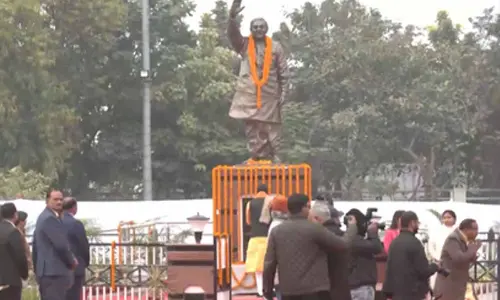Fast breeder reactors

Fast breeder reactors.India\'s first indigenously designed 500 MW fast breeder reactor at Kalpakkam near Chennai is expected to generate power from September and the focus is on not missing the deadline, a top official of the Bharatiya Nabhikiya Vidyut Nigam Ltd said.
.jpg) India's first indigenously designed 500 MW fast breeder reactor at Kalpakkam near Chennai is expected to generate power from September and the focus is on not missing the deadline, a top official of the Bharatiya Nabhikiya Vidyut Nigam Ltd said. P Andrew Karam, an adjunct professor of physics at the Rochester Institute of Technology, lucidly explains in scientificamerican.com that nuclear reactors generate energy through fission, the process by which an atomic nucleus splits into two or more smaller nuclei.
India's first indigenously designed 500 MW fast breeder reactor at Kalpakkam near Chennai is expected to generate power from September and the focus is on not missing the deadline, a top official of the Bharatiya Nabhikiya Vidyut Nigam Ltd said. P Andrew Karam, an adjunct professor of physics at the Rochester Institute of Technology, lucidly explains in scientificamerican.com that nuclear reactors generate energy through fission, the process by which an atomic nucleus splits into two or more smaller nuclei.
During fission, a small amount of mass is converted into energy, which can be used to power a generator to create electricity. Neutrons produced by fission have high energies and move extremely quickly. These so-called fast neutrons do not cause fission as efficiently as slower-moving ones so they are slowed down in most reactors by the process of moderation. A liquid or gas moderator, commonly water or helium, cools the neutrons to optimum energies for causing fission.
In contrast to most normal nuclear reactors, however, a fast reactor uses a coolant that is not an efficient moderator, such as liquid sodium, so its neutrons remain high-energy. Although these fast neutrons are not as good at causing fission, they are readily captured by an isotope of uranium (U238), which then becomes plutonium (Pu239). This plutonium isotope can be reprocessed and used as more reactor fuel or in the production of nuclear weapons. Reactors can be designed to maximize plutonium production, and in some cases they actually produce more fuel than they consume. These reactors are called breeder reactors.
A nuclear reactor can derive a significant amount of energy from such plutonium fission. But because this plutonium fissions, it reduces the amount that is left in the fuel. To maximize plutonium production, therefore, a reactor must create as much plutonium as possible while minimizing the amount that splits.This is why many breeder reactors are also fast reactors. Fast neutrons are ideal for plutonium production because they are easily absorbed by U238 to create Pu239, and they cause less fission than thermal neutrons. Some fast breeder reactors can generate up to 30 percent more fuel than they use.


















